The Pembroke
- 113 units available
- 1 bed • 2 bed
- Amenities
In unit laundry, Granite counters, Hardwood floors, Dishwasher, Pet friendly, 24hr maintenance + more

Yes, Atlanta has walkable neighborhoods—10 areas with Walk Scores above 80 where you can live car-free. Buckhead Village tops the list with a 93 Walk Score, thanks to dense amenities, MARTA access, and a downtown location.
While much of Atlanta still relies on cars, these standout neighborhoods offer a rare mix of foot-friendly streets, reliable transit, and bikeable infrastructure. From BeltLine access in Old Fourth Ward to the retail-rich sidewalks of Buckhead Village, here are the most walkable neighborhoods in Atlanta, ranked by data and lived experience.
| City | Walk Score |
|---|---|
| Buckhead Village | 93 |
| Sweet Auburn | 91 |
| Peachtree Center | 76 |
| Midtown | 87 |
| Inman Park | 87 |
| SoNo | 87 |
| South Downtown | 83 |
| Old Fourth Ward | 82 |
| Castleberry Hill | 74 |
Parts of Atlanta are walkable, but the city overall is still car-dependent, with a Walk Score of 48. However, several central neighborhoods, like GSU and Buckhead Village, score in the 90s and offer car-free living.
Atlanta as a whole still leans heavily on cars, and for many residents, walking isn’t a realistic everyday option, especially in the outlying suburbs. The city’s overall Walk Score is 48 out of 100, which ranks as “car-dependent,” but that number doesn’t tell the full story.
Certain neighborhoods score well into the 80s and 90s, offering a completely different experience for those who live there.
On Reddit, one local summed it up like this: “Very walkable for sure, and the public transit system is fairly reliable. I'd say a car would come in handy, but a necessity while you're in the city? No.”
In recent years, Atlanta has adopted updated zoning ordinances and invested in more pedestrian infrastructure, particularly around BeltLine-connected areas. Walk-and-bike-friendly development has picked up speed, and while the improvements are uneven, they’re gaining ground. The result is a growing patchwork of truly walkable areas in Atlanta, and that’s where we’re headed next.
Some Atlanta neighborhoods are bike-friendly, with Bike Scores in the 80s, but much of the city still lacks safe infrastructure for cyclists.
Some neighborhoods, however, buck the trend: Peachtree Center scores near 78, while Old Fourth Ward and Inman Park land in the 80s, thanks to dedicated trails like the BeltLine’s Eastside.
That said, biking in much of metro Atlanta is still risky. A Redditor writes, “by and large Atlanta is hostile towards bikes… few bike lanes, often filled with parked cars.”
Programs like Relay Bike Share and emerging protected lanes, along with city-led e-bike rebate initiatives that reduced car trips by 40%, suggest momentum is shifting. If you're planning to bike in Atlanta, stick to high-Bike-Score neighborhoods or off-street routes.
Yes, Atlanta is one of the most car-dependent cities in the U.S., with 78% of residents driving to work and limited transit options outside the core, and just 3% using public transportation.
Georgia ranks slightly above average in vehicle ownership, with roughly 0.87 cars per person compared to the national average of 0.85, but 87.6% of workers commute by car, highlighting the region's dependency on driving.
On Reddit, one resident summed it up: “It’s walkable but car-dependent anywhere but downtown and midtown.” Even in neighborhoods with decent transit, most people own cars out of necessity. Traffic congestion is another factor, and Atlanta ranked 10th-worst in the U.S., with drivers wasting an average of over 80 hours in traffic annually.
That said, the city is making inroads. Expansions in MARTA service, park-and-ride systems, and recent transit taxes like Cobb County’s MSPLOST ballot aim to reduce car reliance. But unless you're within the core neighborhoods or have a flexible work situation, you’ll likely need a car to get around most of Atlanta.
While Atlanta overall isn’t known for walkability, there are several neighborhoods that break that mold with dense amenities, reliable transit access, and sidewalks that actually go somewhere. Below are the best parts of Atlanta to live if you’re looking for walkability.
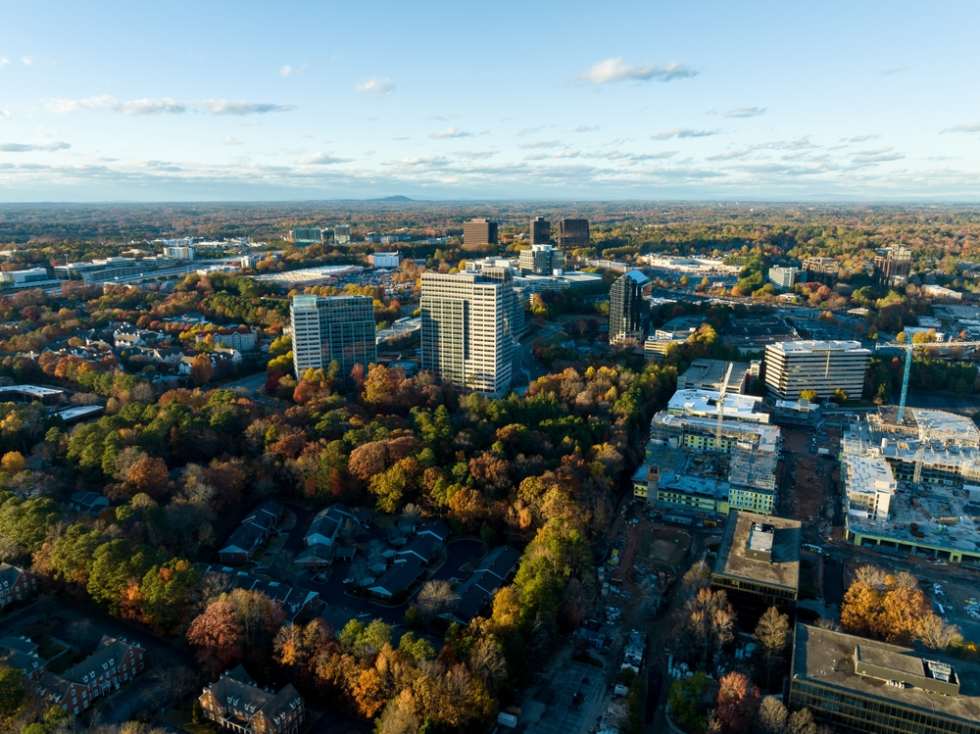
Buckhead Village is ideal for urban professionals, with a 93 Walk Score, high-end shops and restaurants, and PATH400 trail access.
Daily errands, groceries, coffee shops, and restaurants, are all within easy reach. Its relatively low transit score reflects limited MARTA access, though the nearby Buckhead MARTA station and "Buc" shuttle help fill transit gaps. The bike score shows moderate cycling infrastructure, improved in part by PATH400 trail development that connects parks and retail centers.
Though upscale and known for shopping districts like Lenox and Phipps, Buckhead Village offers wide, well-maintained sidewalks and a dense sidewalkscape, making it far more pedestrian-friendly than many other parts of Buckhead. It’s also one of the top safe neighborhoods in Atlanta.
Check out our listings in Buckhead Village.

Sweet Auburn is Atlanta’s top walkable historic district, with a 91 Walk Score, 70 Transit Score, and 81 Bike Score.
Just east of downtown, it offers a rich mix of cultural landmarks, like the Martin Luther King Jr. National Historic Site and the Sweet Auburn Curb Market, plus coffee shops, parks, and markets all within a few blocks’ walk.
The neighborhood benefits from excellent transit connections, with proximity to the Atlanta Streetcar, multiple MARTA rail lines, and frequent bus service.
Cyclists will appreciate its very bikeable street network, supported by nearby off-street trails and growing bike lane infrastructure. With its blend of history, amenities, and transit access, Sweet Auburn offers practical car-free living in the heart of the city.
Check out our listings in Sweet Auburn.
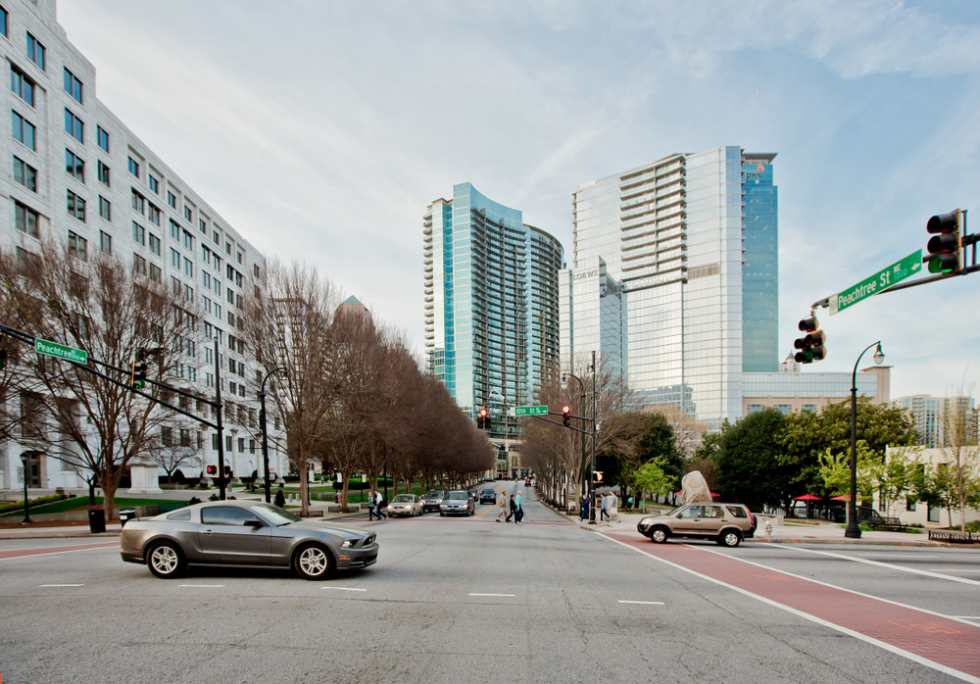
Peachtree Center offers Atlanta’s best transit access, with a 91 Walk Score, 76 Transit Score, and 78 Bike Score.
Sandwiched in downtown, the area is crisscrossed by MARTA rail, buses, and the Atlanta Streetcar, offering easy access for commuters and city explorers.
Riders benefit from the district’s network of underground sky bridges, keeping foot traffic protected from traffic and weather, but street-level sidewalks are also wide and well-lit.
Bike lanes and shared-path connections, particularly near the BeltLine and adjacent Midtown, make cycling a viable option for short trips or last-mile transit.
Check out our listings in Peachtree Center.

Midtown is one of Atlanta’s most mobile districts, with great walkability (87) and transit access (61), as well as nightlife, walk-to parks, museums, and cafes. Centered around Piedmont Park, it has easy MARTA access via the Midtown, Arts Center, and North Avenue stations, plus a robust bus and streetcar network.
Track expansions like the Midtown Art Walk, which are set to improve sidewalks and bike lanes from 10th to 11th street, are drawing attention to pedestrian infrastructure. Whether you're commuting, running errands, or heading out for fun, Midtown makes ditching the car a real option.
Check out our listings in Midtown.
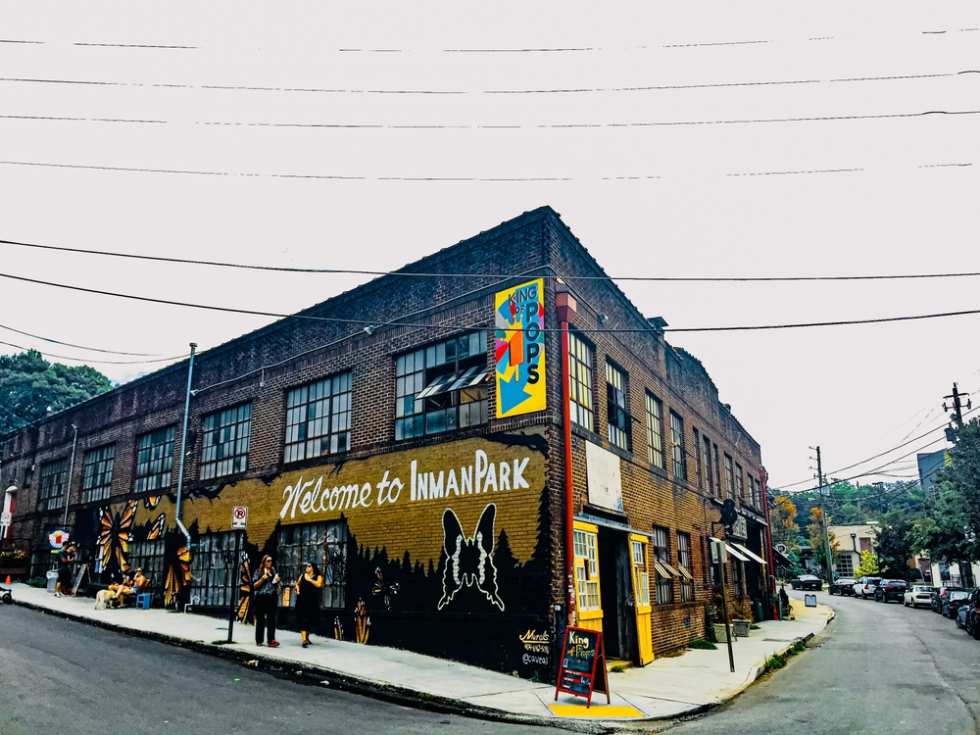
Inman Park is Atlanta’s most bike-friendly neighborhood, with an 82 Bike Score. The historic east-side neighborhood of Inman Park offers bike access to local restaurants, artisanal shops, and the Eastside BeltLine Trail, making errands and outings easy without a car.
Reddit users highlight that “Inman Park to Piedmont Park is about 1.6–1.7 miles, very easily walkable.” Its bike infrastructure is practical too: Euclid Avenue and the BeltLine trail provide reliable routes for daily commutes and leisure rides.
If you want a neighborhood where foot traffic feels natural and cycling is realistic, Inman Park nails that balance.
Check out our listings in Inman Park.

SoNo offers a walkable alternative to Midtown, with an 87 Walk Score, 65 Transit Score, and lower rent than nearby districts.
SoNo, short for “South of North Avenue,” earns strong walkability credentials. Sitting just south of Midtown and north of downtown, this evolving district gives you easy access to MARTA at Civic Center station, plus a handful of bus routes that make commuting manageable.
Local shops, restaurants, and the upcoming Renaissance and Central Parks are all reachable on foot. Reddit users generally describe it as “a fine area overall,” but flag spotty sidewalks that add a slightly urban edge. For walkers and cyclists who want a central location with serious mobility potential, without the premium price of Midtown, SoNo is a smart bet.
Check out our listings in SoNo.
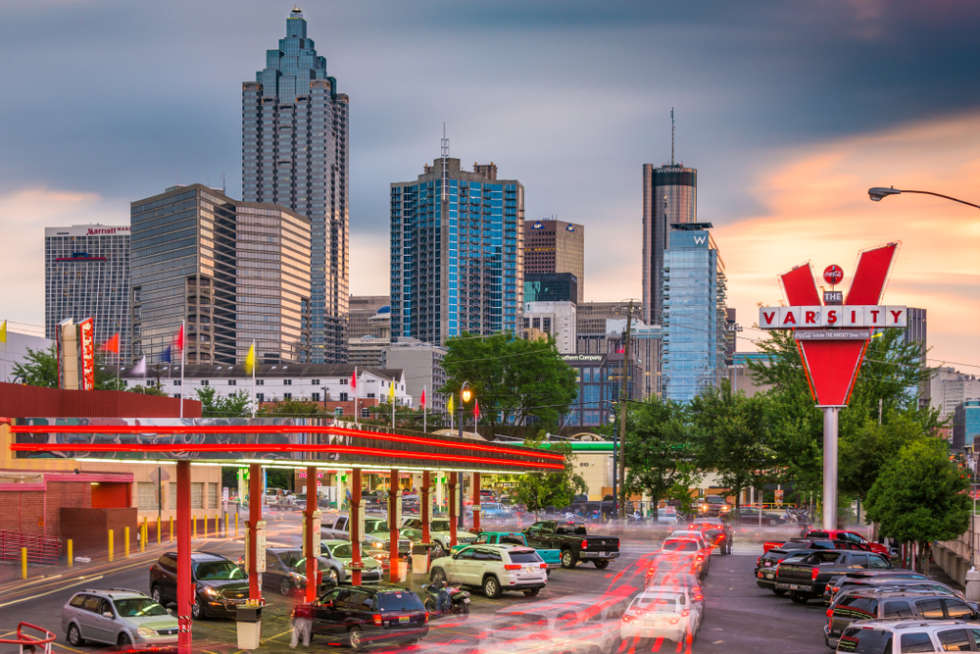
South Downtown is a commuter’s dream, anchored by the Five Points MARTA hub and a walk score of 83. While it may not have the flashiness of Midtown or Inman Park, its walk score makes it one of Atlanta’s most accessible pockets.
Redditors say the area feels “efficient to navigate”, though some warn about inconsistent sidewalks and traffic noise. With essential services just steps from your doorstep and top-notch transit links, South Downtown offers practical walkable living in the heart of the city.
Check out our listings in South Downtown.
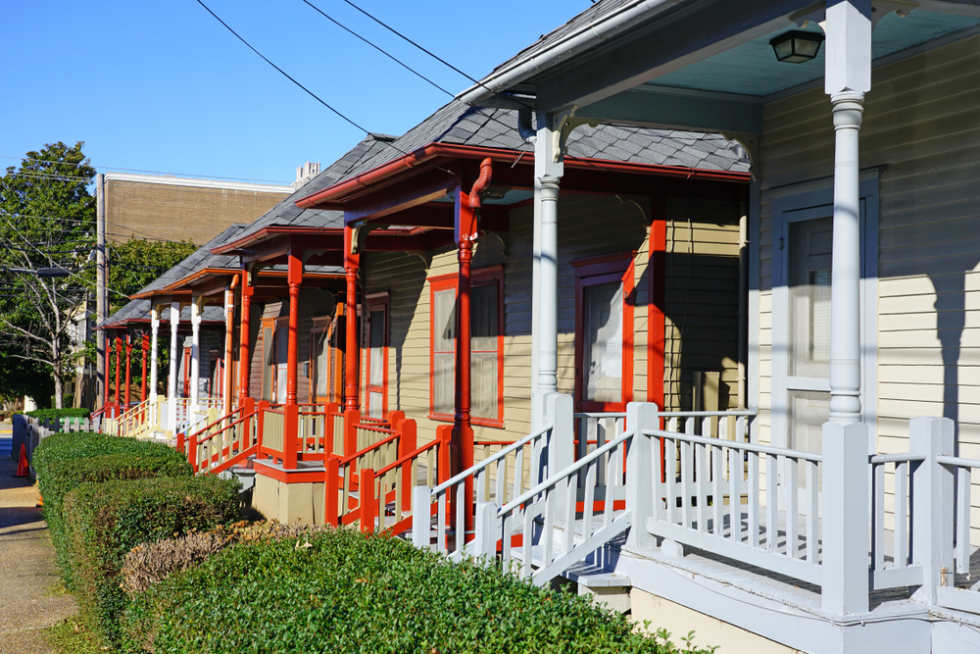
Old Fourth Ward is Atlanta’s BeltLine standout, with an 82 Walk Score, 55 Transit Score, and 85 Bike Score.
Historic Fourth Ward Park and the BeltLine Eastside Trail provide scenic, car-free corridors linking parks, shops, and Ponce City Market just steps away. One resident on Reddit shared:
“I walk/bike a lot in the area, sometimes even at night! …Generally feels safe, but I pay attention to my surroundings.”
For off-street riding, start your journey on Freedom Parkway Trail or combine residential streets. They’re well-trafficked and easier to navigate than major roads. With the perfect mix of greenway access and pedestrian convenience, Old Fourth Ward lets residents live city life without relying on a car.
Check out our listings in Old Fourth Ward.
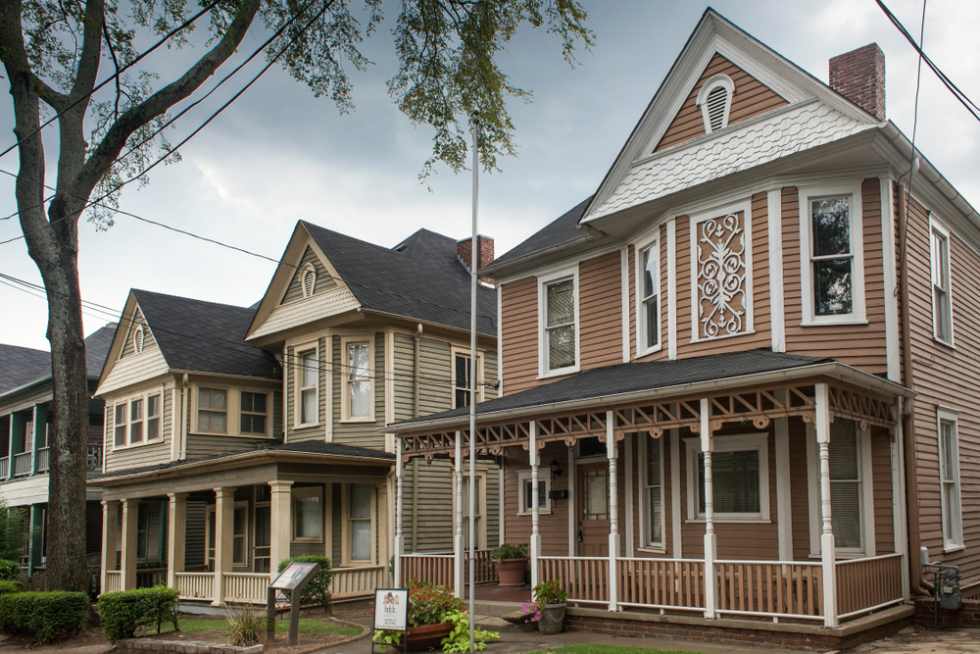
Castleberry Hill is Atlanta’s most underrated walkable neighborhoods, with a 74 Walk Score, 71 Transit Score, and 67 Bike Score.
It’s equal parts arts district, historic hub, and walking haven. Getting around without a car is easy, especially for those living near Peters Street or Walker Street.
The area is lined with brick lofts, art galleries, and cozy restaurants, all within strolling distance of Mercedes-Benz Stadium and downtown. While it’s quieter than other central neighborhoods, its grid-like layout and proximity to MARTA make it an underrated pick for city living without the sprawl.
Check out our listings in Castleberry Hill.
Yes, Atlanta is car-heavy, but these 10 neighborhoods prove you can live here without relying on one. From BeltLine biking to MARTA commutes and everyday errands on foot, the best walkable neighborhoods in Atlanta, GA, make city life more accessible.
For more renter-friendly advice, check out our guide on how to budget for an apartment. When you’re ready to find a place that fits your lifestyle, take Apartment List’s personalized quiz and get matched with rentals built around how you actually live.
Buckhead Village is the most walkable neighborhood in Atlanta, with a Walk Score of 93.
Yes, but only in select neighborhoods. Areas like Georgia State University, Peachtree Center, and Midtown have Walk Scores above 85 and strong transit access, allowing residents to get around by foot, MARTA, or bike.
Peachtree Center has a relatively high Transit Score of 76, thanks to its MARTA rail, bus, and streetcar lines. South Downtown and Georgia State University also offer excellent public transportation connectivity.
Atlanta is somewhat bike-friendly overall, but areas like Inman Park (Bike Score: 82) and Old Fourth Ward (Bike Score: 85) stand out with BeltLine trail access and dedicated bike lanes for daily commuting.

In unit laundry, Granite counters, Hardwood floors, Dishwasher, Pet friendly, 24hr maintenance + more
In unit laundry, Patio / balcony, Granite counters, Pet friendly, Stainless steel, Walk in closets + more